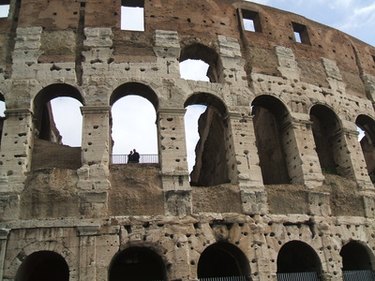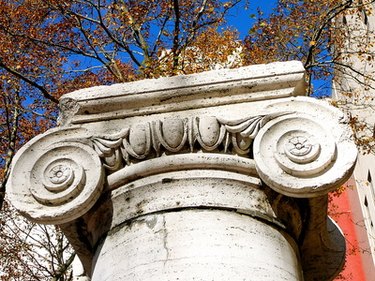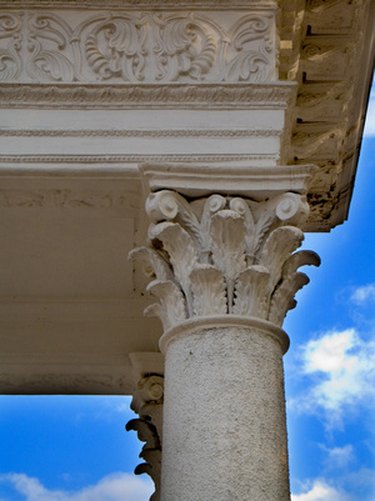
There are three main types of Roman columns used throughout much of ancient architecture. These styles are still used today in historical buildings and in newer buildings as decoration. Roman columns were central elements of the grand buildings and temples associated with ancient Rome. The column types were called Doric, Ionic and Corinthian.
Doric Columns
Video of the Day

Doric columns are the simplest Roman columns. They have very little decoration on the capital, the juncture between the column and the roof, and the column itself was sometimes smooth, instead of the grooved appearance of many Roman columns. This type of column would have been less expensive. Doric columns are the oldest type of Roman columns, according to the Roman Colosseum website. They were designed to carry a great deal of weight.
Video of the Day
Ionic Columns

Ionic columns are slightly more decorative than Doric columns. The capitals of Ionic columns are decorated with spiral scrolls, and the column's shaft was more slender and fluted than that of a Doric column. Ionic columns were invented by the Greeks, but used throughout much of traditional Roman architecture as well. The Colosseum features Ionic, Doric and Corinthian columns in its architecture. Doric columns held more weight, while Ionic columns were useful for decoration.
Corinthian Columns

The most ornate type of Roman column is the Corinthian column. These types of columns feature the spiral scrolls, but the capitals are also decorated with leaves, called acanthus leaves, according to the Roman Colosseum website. Corinthian columns had slender, fluted shafts and were often used to decorate important buildings and temples. The third tier of arches at the Colosseum features Corinthian arches, since they would hold the least amount of structural weight.